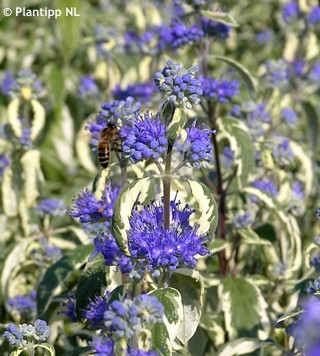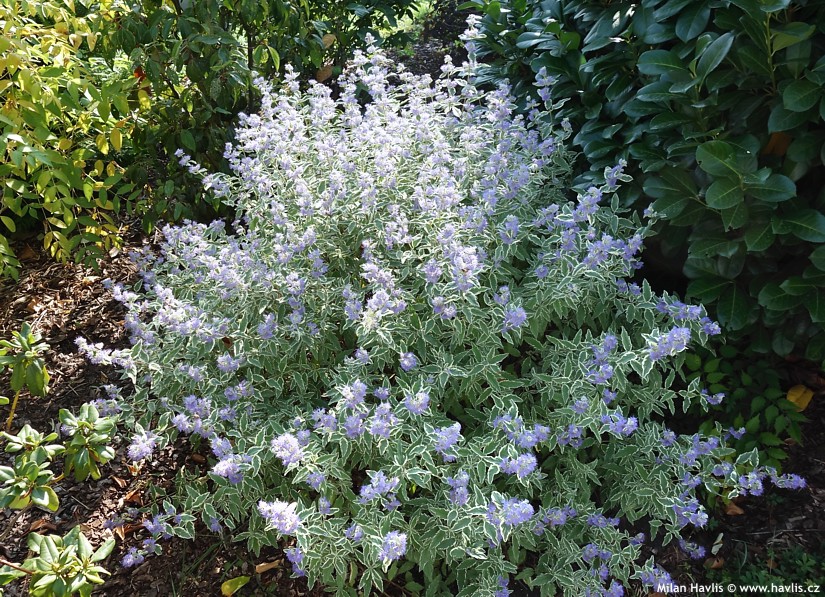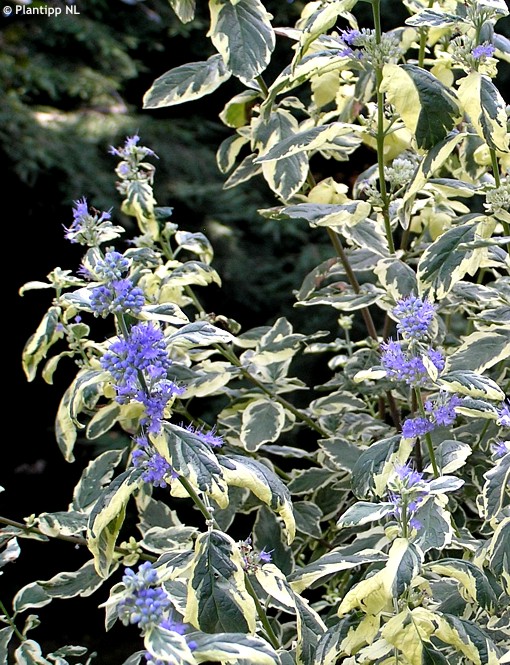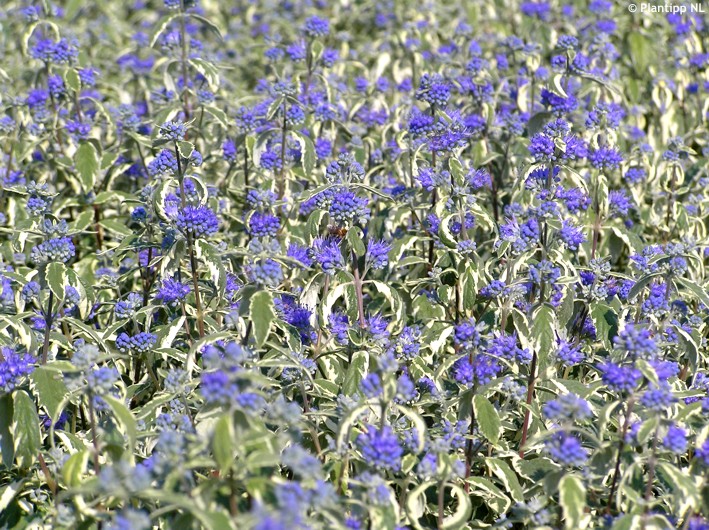Caryopteris x clandonensis 'WHITE SURPRISE'® bluebeard
Caryopteris
This bluebeard variety originated just like many other amazing novelties: as a naturally occurring mutation of another plant. When Jan Jacob Bos form a Dutch nursery visited his field with Heavenly Blue variety in 2005 he found an unusual branch with variegated foliage. He cut it off, tried to reproduce it and since the newly produced plants continued showing the same characteristics as the very first odd branch he had it patented under PP 21,146 in 2007. The new name precisely describes his feelings when he first saw the mutation: White Surprise®.
White Surprise® is a new bluebeard variety with rich, creamy-white variegation on all leaves. It produces profusion of indigo-blue to violet-blue flowers from late summer until early autumn which look magnificent on the background of light-coloured leaves. It makes a small woody shrub which is more compact and denser than its parent, reaching 50-60 cm tall and about 80 cm wide in maturity. Flowers are a great source of nectar for bees, bumble-bees and butterflies. Thanks to colourful foliage this plant offers a long-lasting interest in beds and borders, remarkably longer than what the blooming period can offer.
It does not merely benefit from regular pruning, I would say that pruning every spring is a crucial issue for its health, appearance, and number of flowering stems. After all frosts cut it back to about 10 cm of last year’s growth. It flowers on new wood so pruning will guarantee forming a dense and compact bush with many flower panicles.
Bluebeard is usually quite soil tolerant, however, it does best in fertile, very well-drained soil in full sun. Drought tolerant once established. Hardiness has so far been tested down to -24°C (USDA 6) but White Surprise® is expected to take slightly deeper frost.
Last update 27-12-2010








































